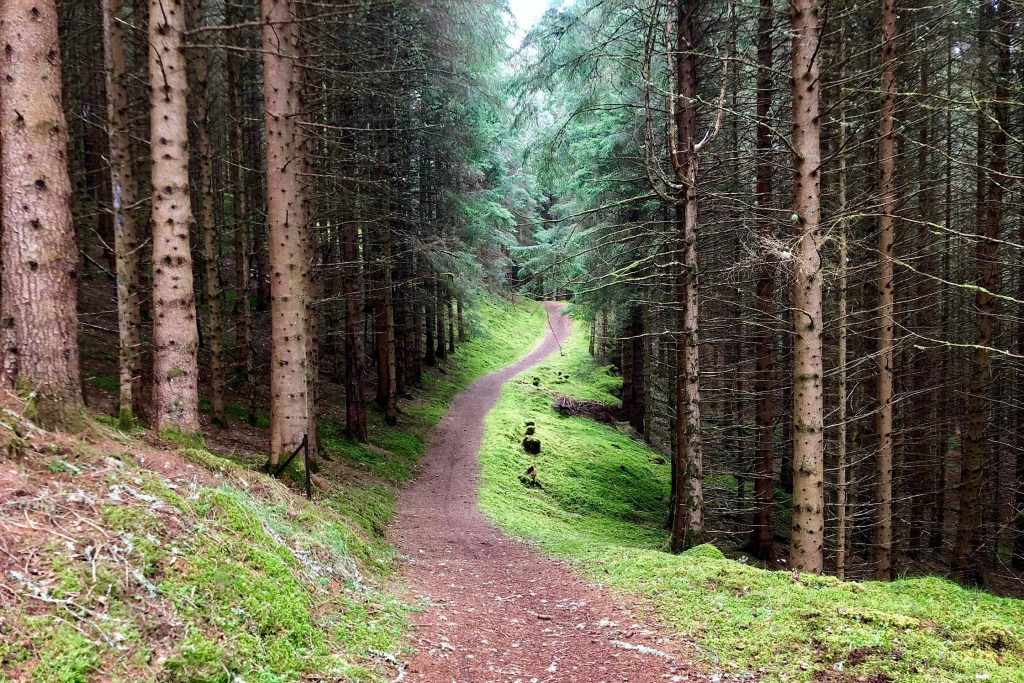
Andrea and I started our journey with a much-needed out of wine experience in Scotland on the Great Glen Way with our friends, Reuben, Bella and Benjamin Weininger. I admit that after seven months in Italy it was nice to be in a country where both of us were fluent in the local language; although sometimes Italians speaking Italian are easier to understand than Scottish speaking English. I’d wanted to make that walk in Scotland for a long time.
It was memorable, not only because it was the first time I’ve walked/hiked 19.5 miles in a day, but we also found the best fish and chips I’ve ever seen and tasted along the trail. Edinburgh lived up to the hype of its beauty and had an unexpectedly diverse, quality ethnic cuisine scene; we ate some of the best Indian and Korean food while there, and a duck dish that I will remember forever. And I’ve got to give props to the less attractive industrial city of Glasgow for the same high quality of ethnic food.
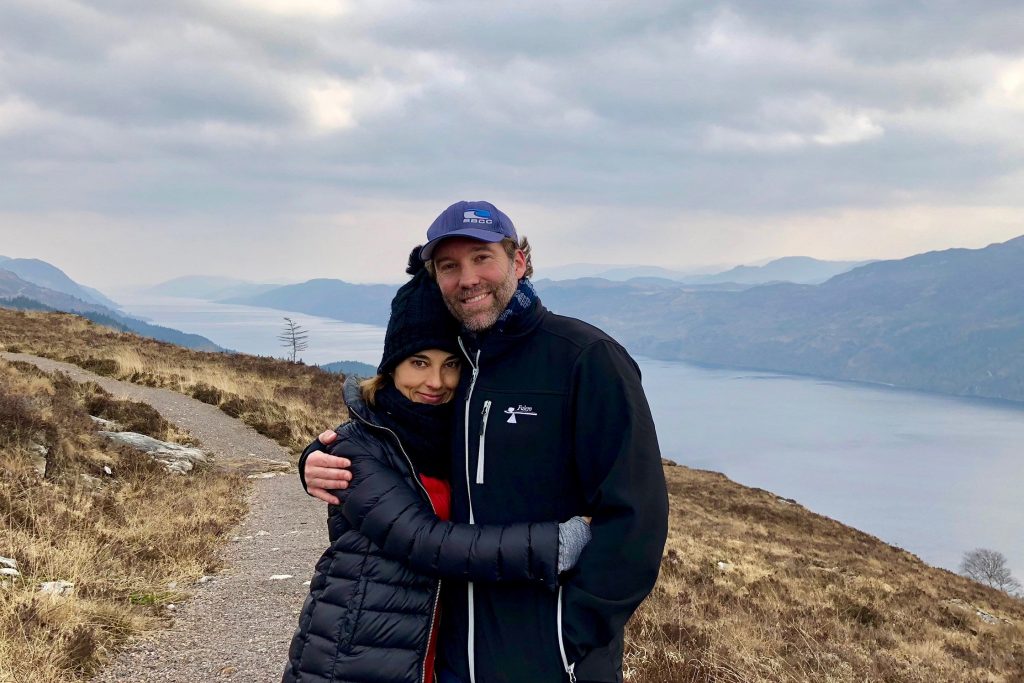
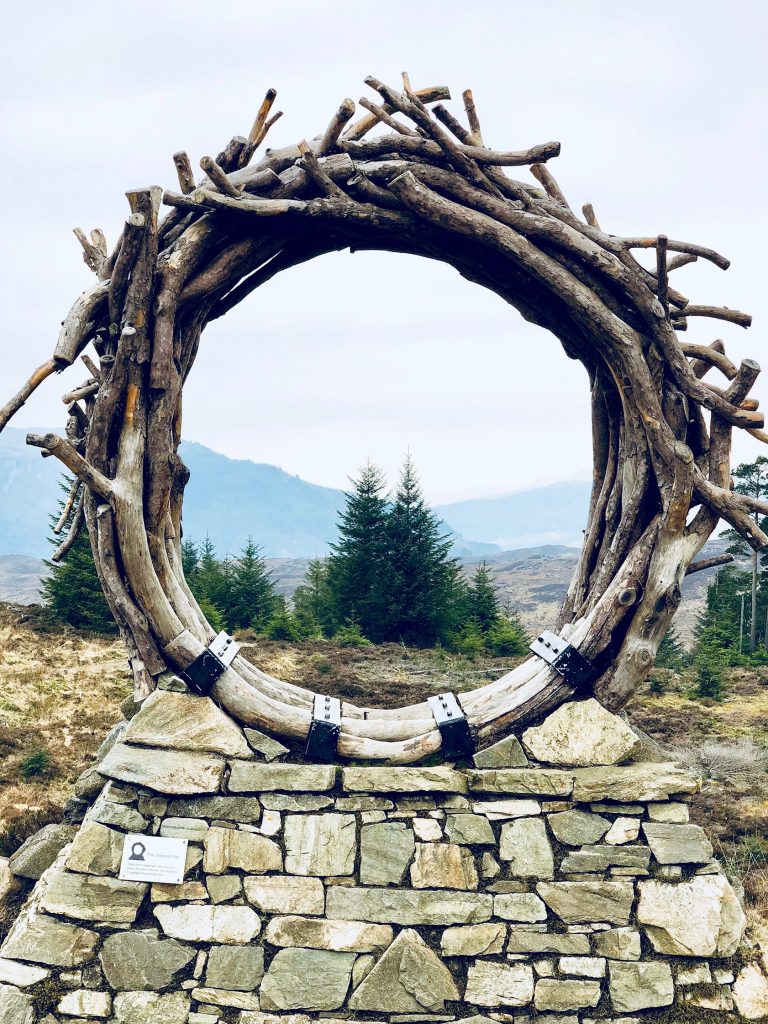
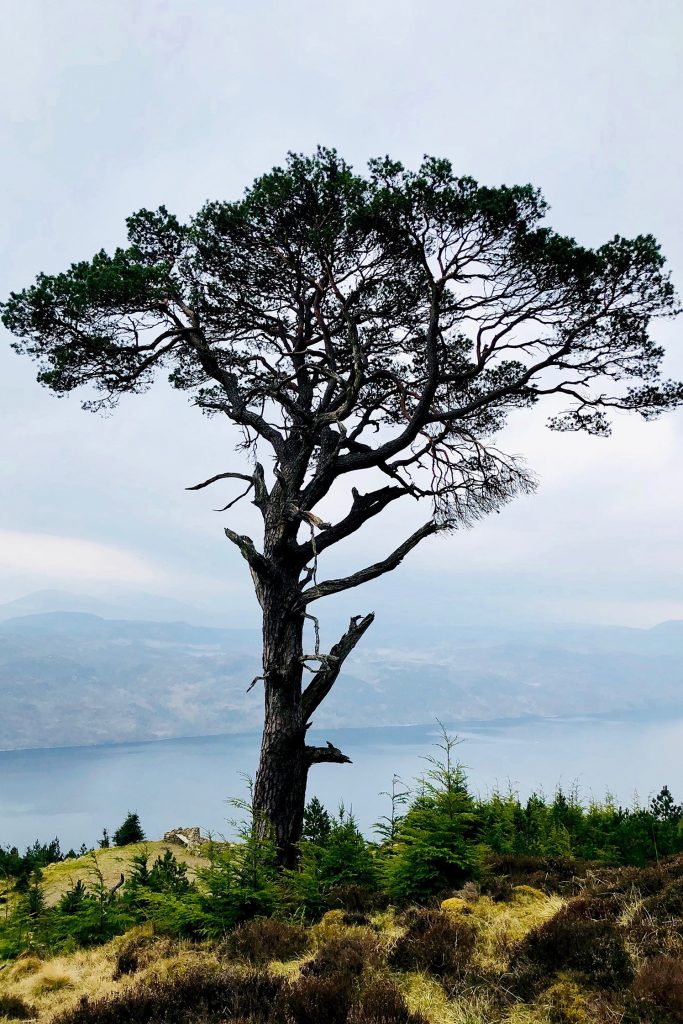
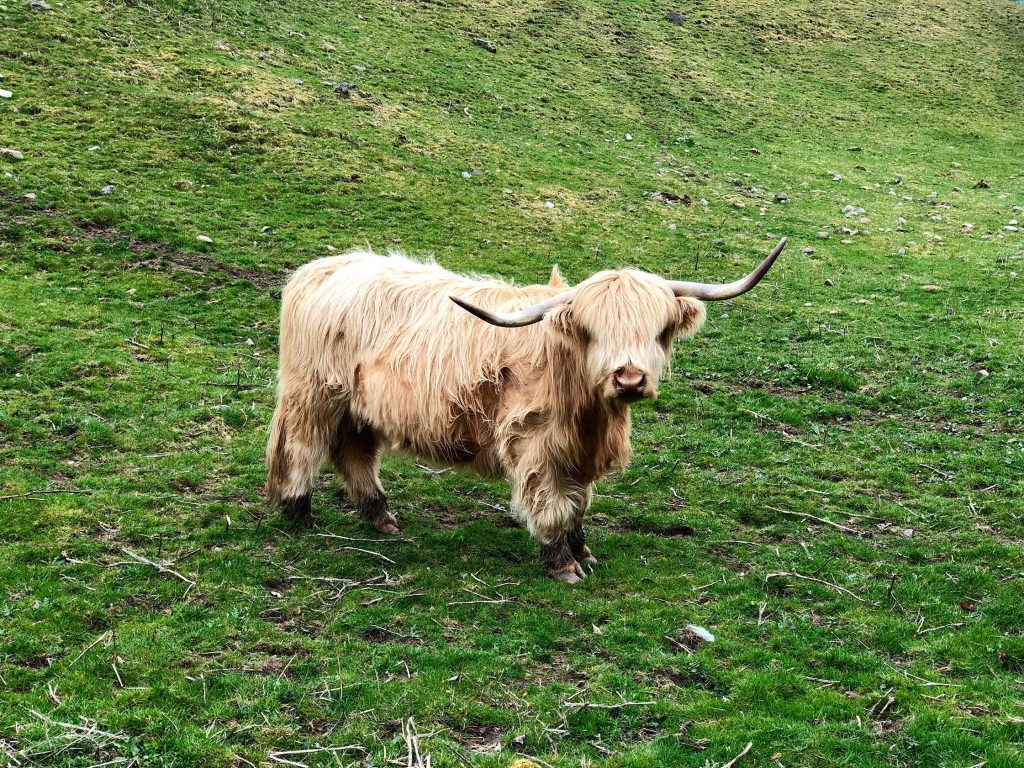
After Scotland we went to Madrid for a few days to wait for two of our coworkers at The Source, Andrew and JD, to join us for a trip in northwestern Spain. After an uneventful couple of days in Madrid that were highlighted on two occasions by visits to the restaurant, Media Ración, we set off for Jimenez de Jamuz to visit with the folks at Fuentes del Silencio and Chef Gordon at the restaurant El Capricho for my seventh meal there (but whose counting?)—never a disappointment. But first, we had to stop at Segovia, one of our favorite small cities in Spain, for a dinner at José Maria to eat his epic suckling pig. Sadly I was a little sick from something I ate in Madrid so I took only a single bite from Andrew’s plate, but it was delish! José Maria probably makes the best suckling pig in Spain, though I am sure there are contenders I don’t know about, and in my last four visits it’s been perfectly consistent. My favorite portion is the leg, so if you get the opportunity to choose your portion, go for that one.
We left Segovia the next morning for Jimenez de Jamuz to revisit its ancient resurrected vineyards, discuss the gold in the soil and the local yeast strain that pronounces the unique voice of its terroir, and the early promise of more special wines to come from Fuentes del Silencio and their team of fired up wine pros. Then it was off to El Capricho for the four-hour lunch, and on to the ranch to watch José wrangle some 2000 lbs+ steers with his team. We plan to import José’s delicious wine when he has something for us to sell.
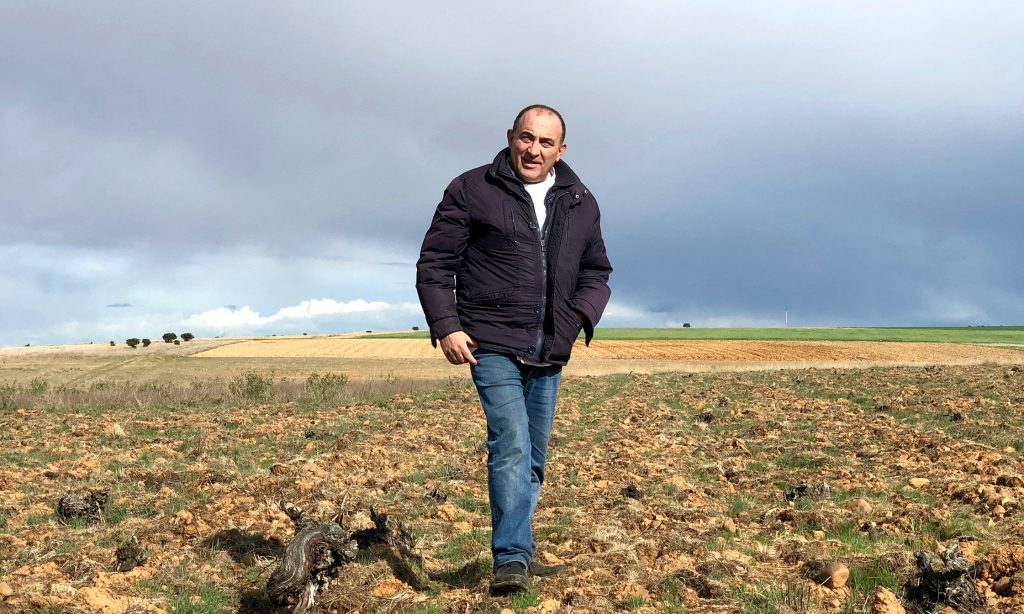
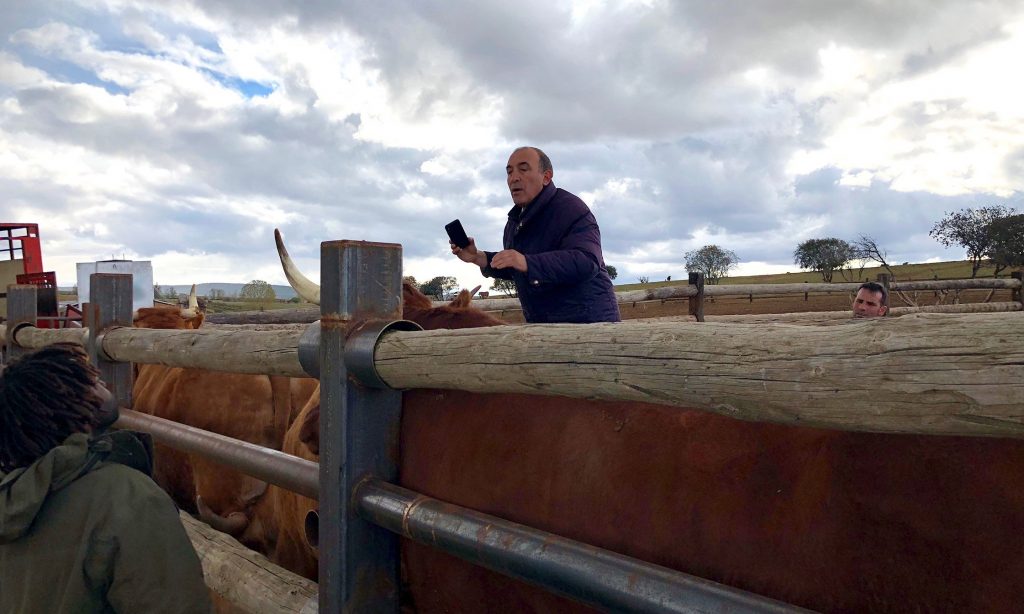
We started the next day with an impromptu visit with José Antonio Garcia and his wife, Julia, vignerons in Bierzo, who were kind enough to give us a quick vineyard tour of the area around Valtuille and Corullón. While Bierzo is not part of the Galician wine region, when you start to climb the hills it’s every bit of Galicia when considering its geological heritage. After a walk in the dark red clays of the lower vineyard land, he took us for a quick tour of high elevation slate-dense and quartz-rich vineyards of Corullón. It was my second time with José up the hill and it was as impressive as the first—what a place! Everyone talks about the extremes of the Ribeira Sacra because the vineyards and valley carved out by the rivers are truly breathtaking (a description I will reserve solely for this wine region—a place where photographs just don’t do its beauty justice), but some slopes in Bierzo are just as steep but not terraced like they are in the most steep parts of the Ribeira Sacra, which makes them all the more precarious. Once we got up into the higher areas it began to snow, a signal for us to return down the hill. Next stop, Galicia.
The Galician wine scene is inspiring (as are many of the southerly regions of Spain) and I am humbled to become involved and received with such welcoming hospitality. Andrea and I went to Spain on our honeymoon a few years ago and completely missed Galicia as we seemingly went everywhere else in the country—I guess we were saving the best for last. After too many heavy reds on that trip we fell back on beer and Albariño only after the first week of our month long adventure. I asked waiters along the way if there was an organic Albariño on the list, but no one knew of anything. I contacted a certified organic Albariño producer there and started the ball rolling in that direction and imported their wines for a short time afterward. I had no idea that I was walking into a wine world that would capture my attention and consume my focus.
When we got back home to Santa Barbara from our honeymoon, a series of events happened that were like a calling to Galicia. It started with our friend Rajat Parr who randomly gave me a bottle of Envínate and said, “you need to go to Galicia.” Brian McClintic, who lived in our back studio at the time, went too and came back with the same encouragement. Then we hired JD Plotnick, a wellspring of information on Galicia, a region he had already focused on back when its newfound uprising was only a whisper. He helped direct my attention to which producers’ wines we should seek out during our first trip to set the bar on taste, as well as which restaurants to visit. I asked him if he knew of anything out there that wasn’t already being imported to California, or anywhere else in the US. He gave me many names but one of them was “an upcoming producer” he’d heard about from Raul Perez (Spain’s New Wine Testament prophet), though he hadn’t yet tasted the wines. After one Facebook message to this guy, in Spanish (thanks to my wife), we had a meeting set up.
Andrea and I have now been Galicia five times in less than two years (three times in the last seven months), and plan to go back again at the beginning of June and then again in September. I’ve learned a lot over the last couple of years but there are too many loose ends and much more context needed before I engage in more extensive writing about it from a technical and experience standpoint. What makes it most difficult to wrap one’s head around is that the locals have to largely rediscover their own region because much of the knowledge has been buried in the local cemeteries with generations past. What also holds me back from going deeper at the moment is that I’m one of the newer importers there and have great respect for those who have focused on this region for so many years before me. I feel I need to earn my stripes first, and only time brings those.
Our first stop in Galicia was the Ribeira Sacra to visit a new producer there, Breogan (Breo) Rodriguez, the owner/vigneron at Terra Brava. It was an impressive lineup out of barrel with his miniscule quantities of 2018 (thanks to the monstrous mildew challenges to that vintage), so we expect a great follow-up to his super 2017s. Breo’s wines made from Mencia and Caiño Longo (my new favorite grape) are clean and honest and bear a strong resemblance in mood and some characteristics to Côte-Rôtie and Northern Saint-Joseph Syrahs grown on a mix of metamorphic and igneous rocks; I speak of those cool metal and mineral fresh notes on the palate and nose with darker earth and fruit. The wines just landed in the U.S. and with the enthusiasm of JD, Andrew and Rachel Kerswell (our national sales manager and New York outpost who has visited Breo and our new roster in Galicia), spreading the word on what we were able to buy from this micro producer should be short work.
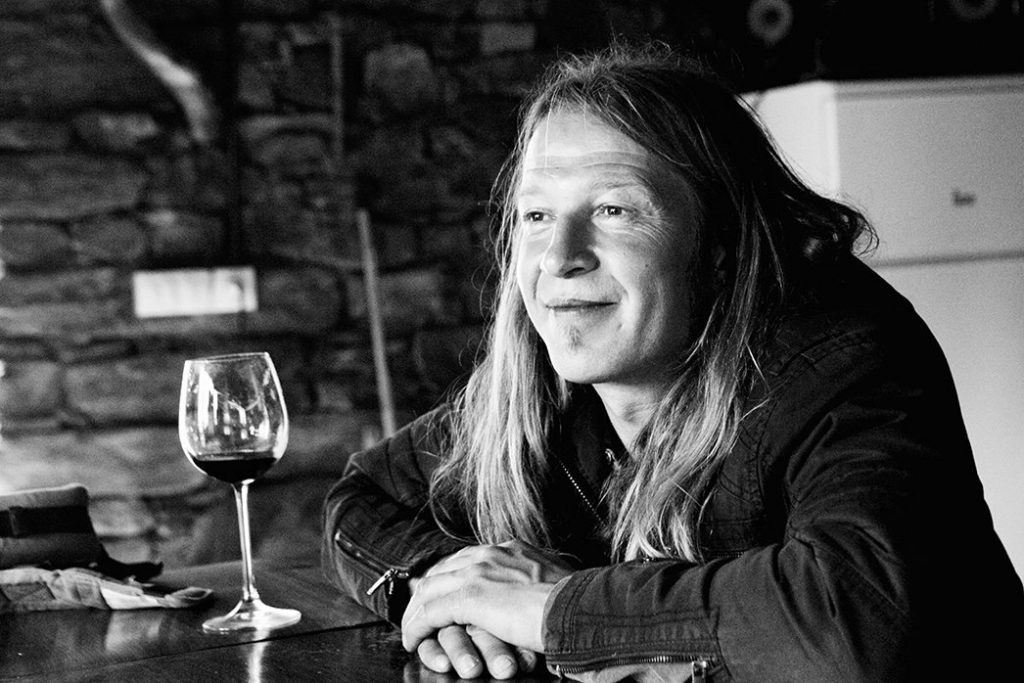
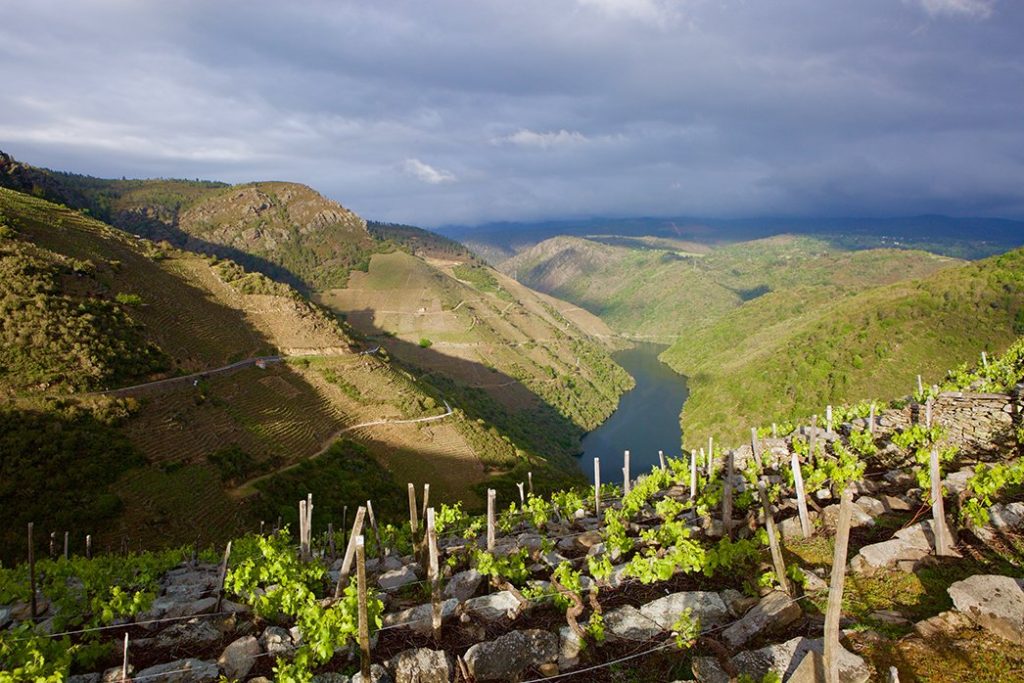
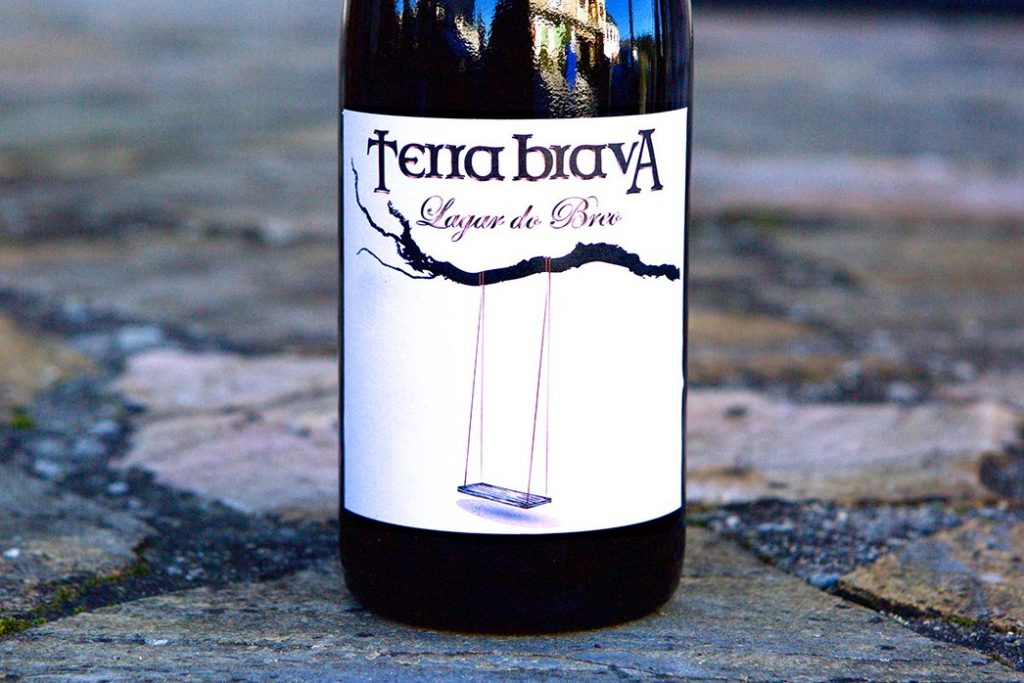
Next was the Ribeiro, a region I think may be the top place to watch in Galicia. I admit that I don’t yet know much about Galicia compared to other wine regions, but over the last twelve years I’ve spent nearly four months of each year on the wine trail observing the physical traits that make up Europe’s top wine regions, which have led me to this hunch. Aside from that, perhaps the most compelling argument is that long ago the Ribeiro once shared Spain’s top honors next to the Rioja for wine and there’s no doubt that it has the potential to rise again to take its place as a contender for top billing.
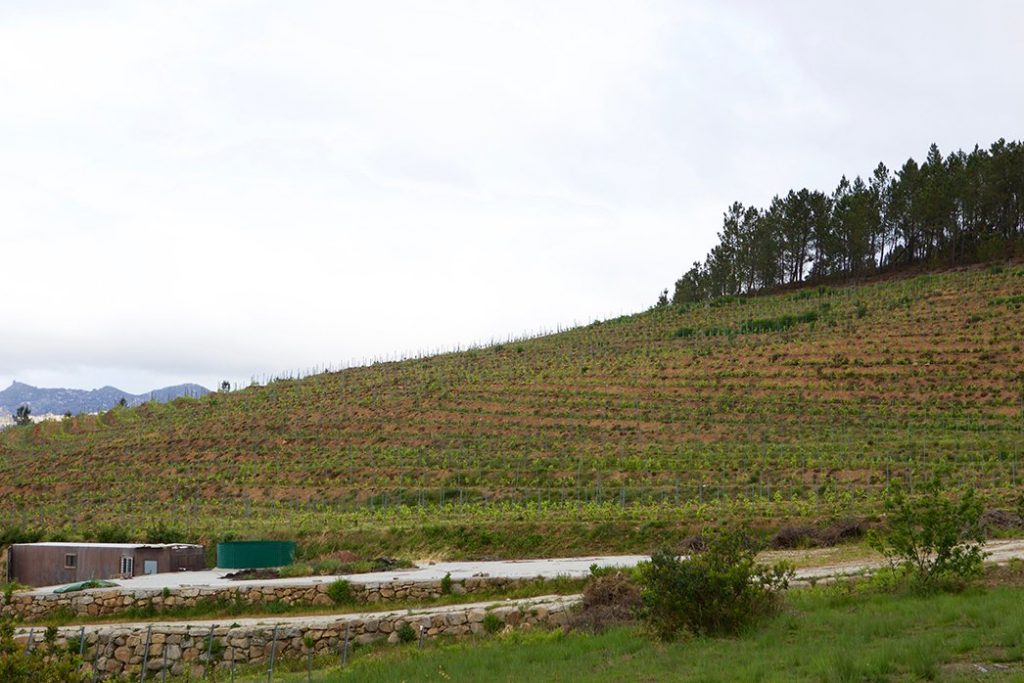
What makes it most interesting from my perspective is the Ribeiro’s perfect location between the climatic tug of war between the cold Atlantic and a warm Mediterranean influence, its great diversity of rock and soil types (all acidic soils with a lot of granite, schist, slate, gneiss and other metamorphic rocks that contribute to a more broad impact on the palate of the wines) on mildly steep hills, and softer sun exposure, resulting in wines with great snap and crunch in both white and red—the latter being the most intriguing to me. The red grapes of Brancellao, Caiño Longo, Souson, Ferron are a few examples of indigenous grapes that show tremendous promise.
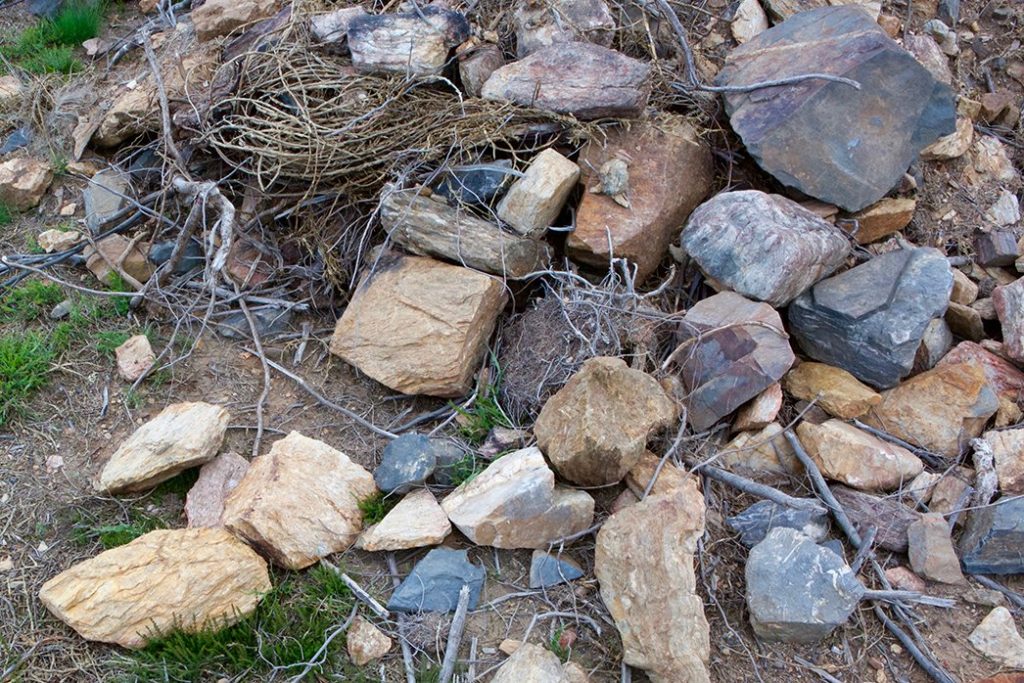
Our new winery partners there are Bodegas Paraguas, Cume do Avia and Fazenda Augalevada—all tough names (especially the last one) but spectacular wines. To have three producers from this single region seems like a lot at first, but each of them are different shades of the area.
Paraguas is exclusively producing white wines led by Treixadura, a grape that in their direction has a Chardonnay-like body and structure, but with almost no relation to Chardonnay’s presentation of tastes and smells—it tastes like Galicia: savory and mineral, with honey, dried grass, citrus and stone fruit. Then it was Diego and family at Cume do Avia with their high energy, organically farmed reds that completely blew my mind last year and redirected my attention to red wine. The new vintage of their whites is a significant jump from last year and shows wonderfully raw, straightforward terroir-rich expressions of indigenous whites.
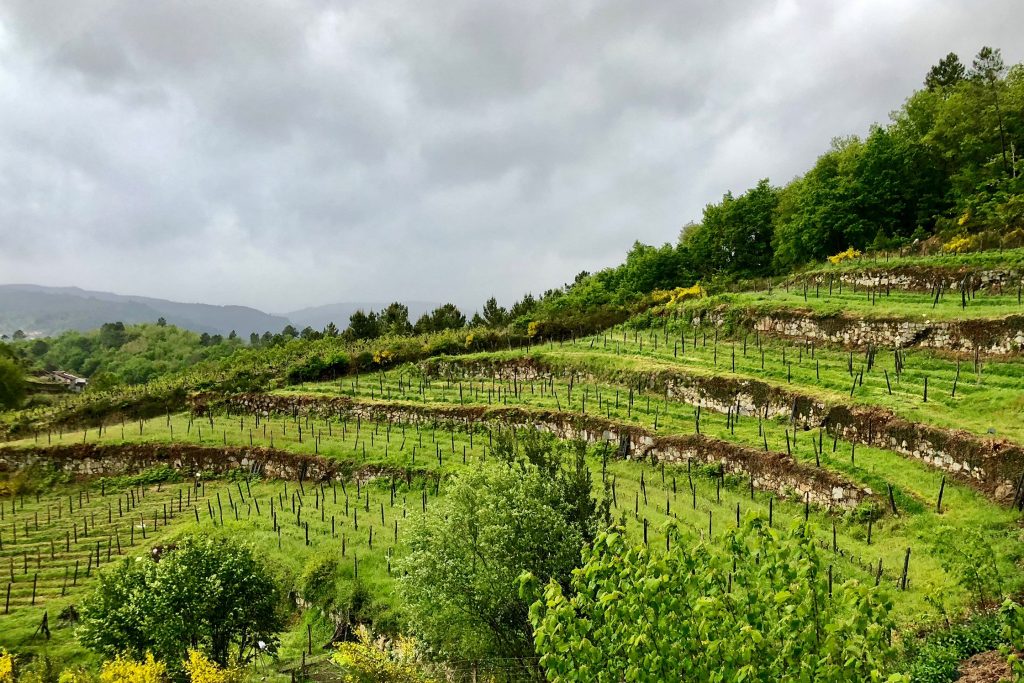
Finally it was Augalevada, the unique embodiment of the biodynamic grower, Iago Garrido, who buried an amphora filled with wine in his vineyard that subsequently developed flor yeast and set the direction of his focus. He thought the wine should be thrown away at first, but bottled them for his friends who began to ask for more and what stood in Iago’s way became his way. As a new winemaker, Iago has demonstrated early his tremendous eye for detail and a few of the wines I have tasted from amphora and barrel over the last three visits are on par with some of the most riveting single tastes of wine I can remember. His estate white, Ollos de Roque, is a magical mystery tour that lands somewhere between Chenin Blanc from Vouvray and Savignin from the Jura, with a subtle touch of flor. Some of the reds out of barrel can, like they did for me, compel you to once again pose those meaning of life questions.
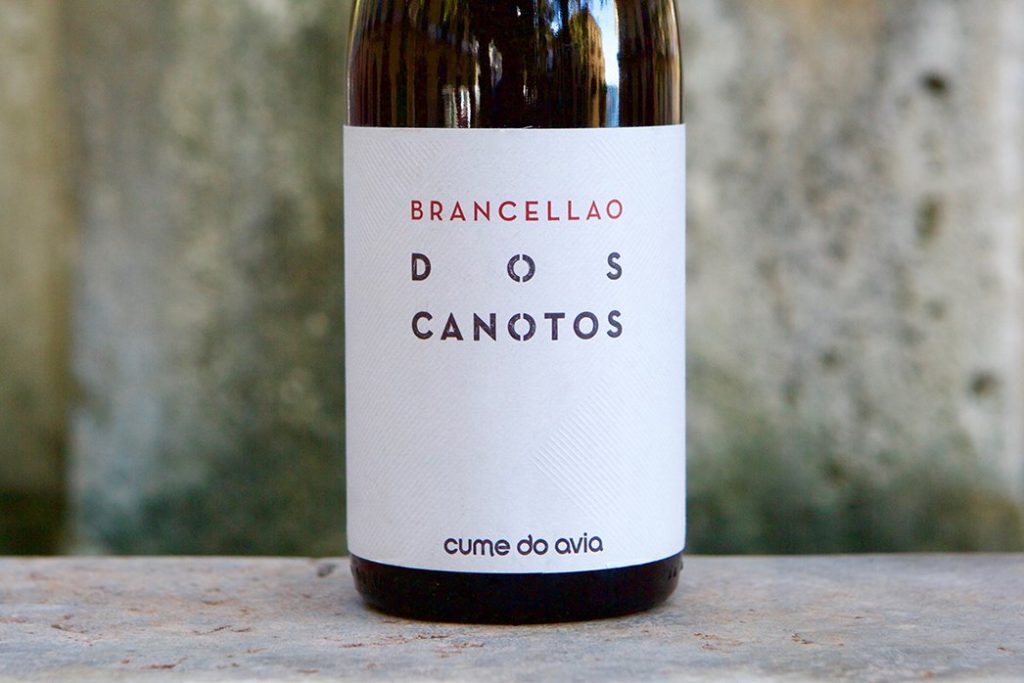
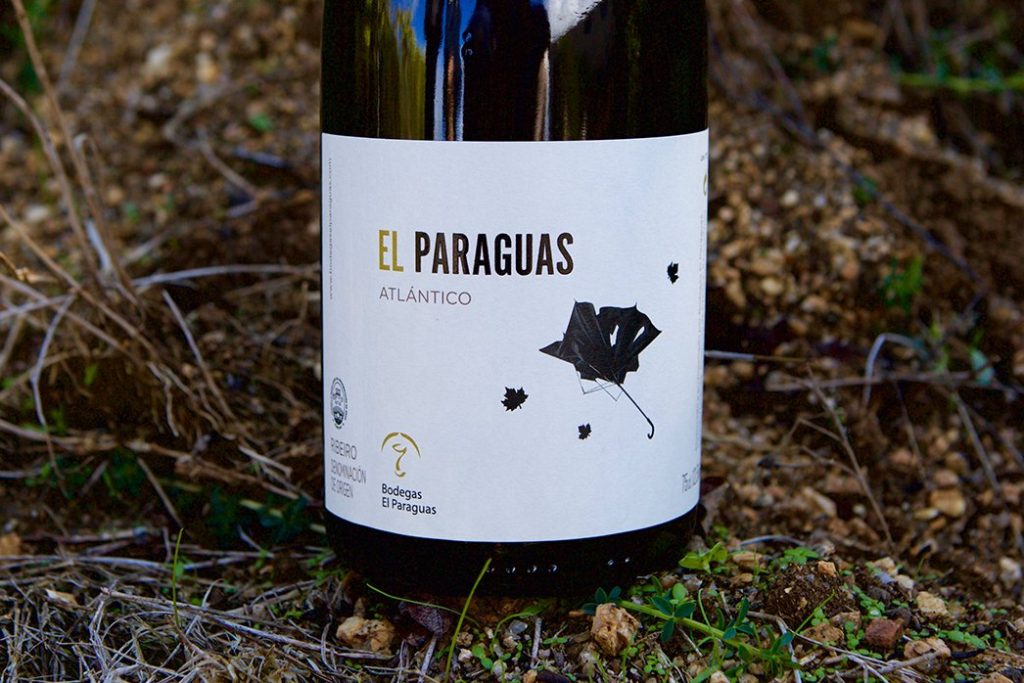
Our final visit in Galicia was in the Rías Baixas for a new project with the budding superstar—to be revealed at a later date—whose name was given to me by JD. During my first visit with him a couple of years ago, he politely refused my proposal to work with him in California out of respect for his U.S. importer, who I didn’t know already represented his wines in CA, and who buys as much of his wine as he has to sell. Accepting and respecting the answer but not the defeat, I proposed a new angle on my second visit with him and he was open to it: a project together. Since then we’ve developed a strong friendship and when we visit the area, he literally clears his schedule for us. It’s funny though that he speaks no English and I don’t speak Spanish (yet!), so it’s a relationship that exists through my wife and Google Translate when we are at dinner or lunch together.
He asked how I thought he should make the wine for this project but I told him that his approach already embodied all I could dream up in crafting an ideal Albariño: sleek, mineral, energetic but balanced, and a nearly perfect match of intention and execution. I gave a few minor suggestions, which he employed, and the results were staggering—not because of anything I did, but because he’s got the magic touch. I could see it on the face of Andrew and JD as we tasted through the range of unfinished wines over lunch, that they had already sold every bottle of his wine in their minds before they were even finished and brought to the U.S. Those wines will arrive in the fall.
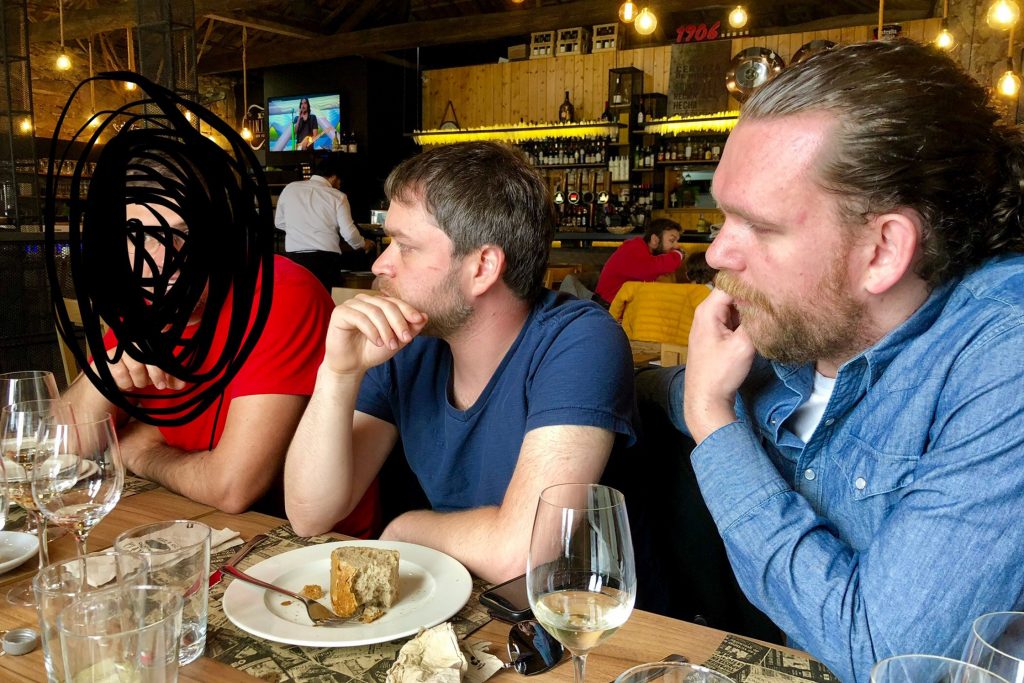
It was great to run the route with Andrew and JD, to soak up their experience and passion for Spanish wines and the abundance of conversations about unusual things and trends in wine. Those two could captivate an audience with an unscripted on the road wine comedy show. Even Andrea was laughing out loud regularly by their never-ending conversations full of disagreements and amusing offhanded comments. She can really get sick of the wine talk, but I kept checking in on her through the rearview mirror while she quietly tried to get some sleep as they ceaselessly rambled on about everything and nothing, while at other times she smiled and erupted into hysterical laughter with tears streaming down her face.
We jumped over the Spanish border and into Portugal’s Vinho Verde country to one of our favorite spots in the world, Quinta do Ameal, and one of our favorite people, Pedro Araújo. Whenever we find ourselves in Ponte de Lima, a beautiful and well-kept Roman village, in the Lima Valley, we never want to leave. The visit with Pedro was as great as usual and involved his rapier-like delicious wines, epic sea bass and suckling pig, along with the constant feeling that Andrea and I may have found our Elysium on Earth.
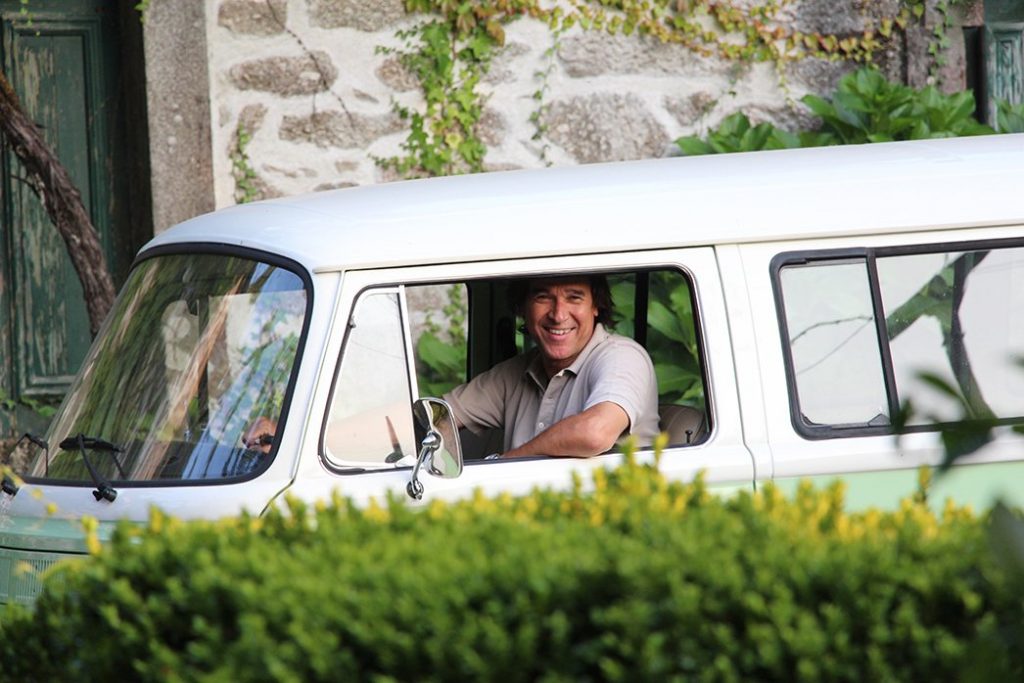
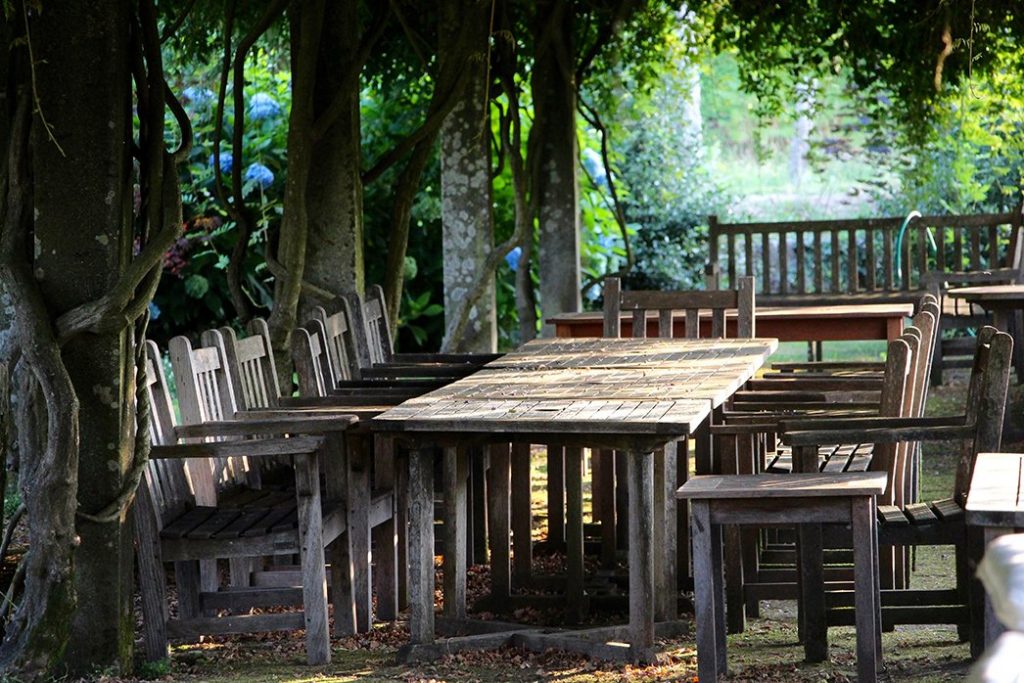
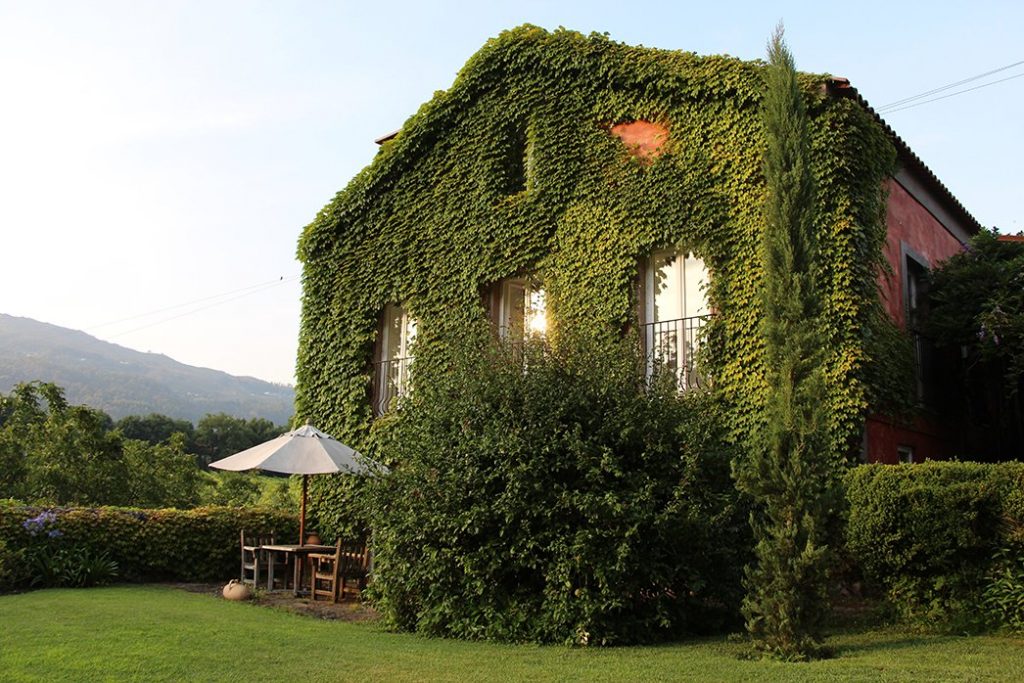
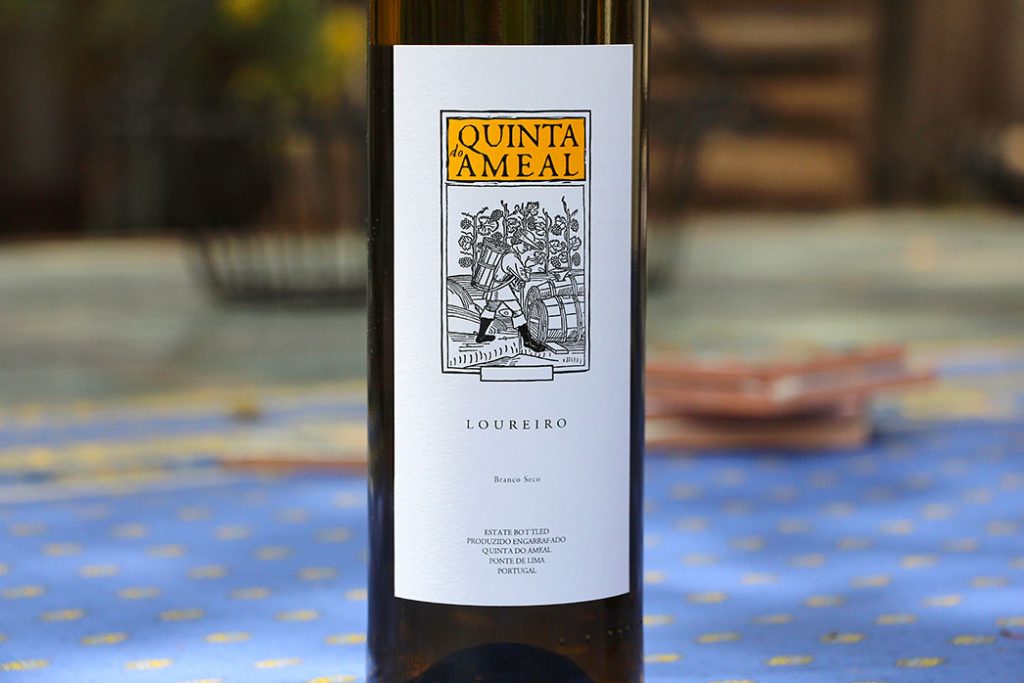

Ponte de Lima has become such a special place for us; the energy, the humility and kindness of its people, the landscape rich in trees and beautiful rock outcroppings, the ocean a fifteen minute drive away with the Spanish Galician border the same distance. Andrea and I have decided to move to Ponte de Lima after our one-year anniversary of living in Italy. In fact, we’re in the process of buying a house in the countryside (we won’t know for sure if it will be ours until June) and will be setting up our residence there for the foreseeable future. During our time there we invited Pedro, Andrew and JD to check out the place we are trying to buy. Pedro was skeptical before seeing it because he knows the land so well and what’s available out there, but once we arrived he went crazy for the place. It’s located up a ravine near an old monastery and sits out on a point all alone with exposed views on three sides. It’s a lot like Toro Canyon in Santa Barbara (for those who know the area) but with a Midwest U.S. country home price. We’ve fallen in love with it and hopefully the June deal will go our way.
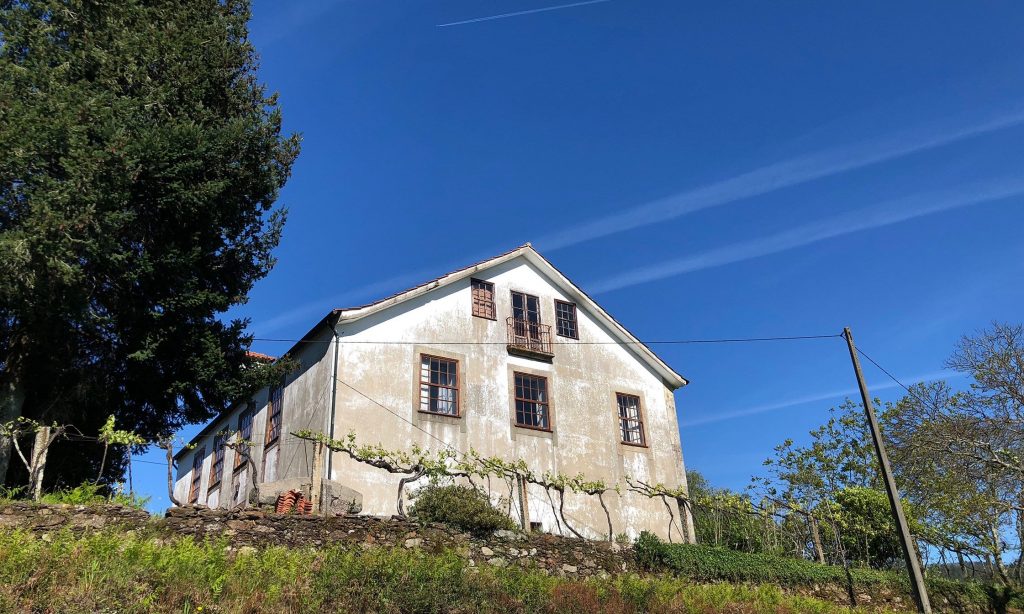
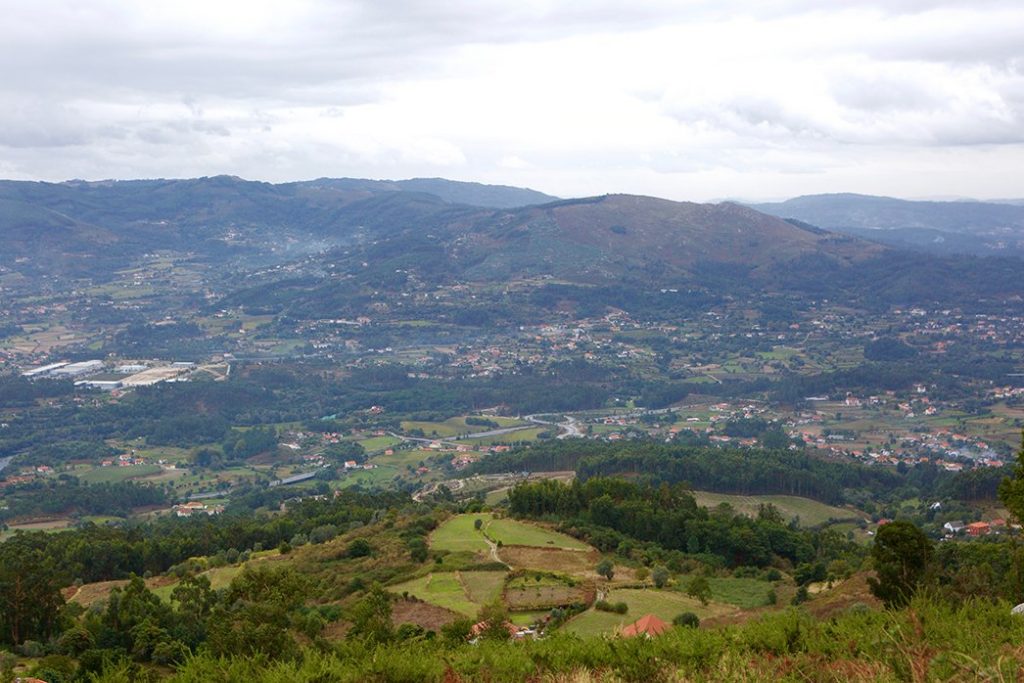
Our short trip with JD and Andrew ended at the Porto airport. They were headed to France to run the route over a couple of weeks in Chablis, Côte d’Or and Beaujolais. We spent Andrea’s birthday in Porto, a wonderful city in the middle of a full renaissance. When we were there the first time in 2014, they were selling abandoned apartments in Porto’s historic center for 1€ (no joke!) if you had the money to renovate it. I told Andrea that Portugal was the place to be and I’m even more convinced today. Now the city is full of life, color and people—in a very short time so much has happened in that city and the changes are welcome, except for the new busloads of tourists. A tip: If you ever stay there, try the Sheraton. They have the best spa facilities we’ve been to for a hotel in their range and the staff is extraordinarily gracious and attentive.
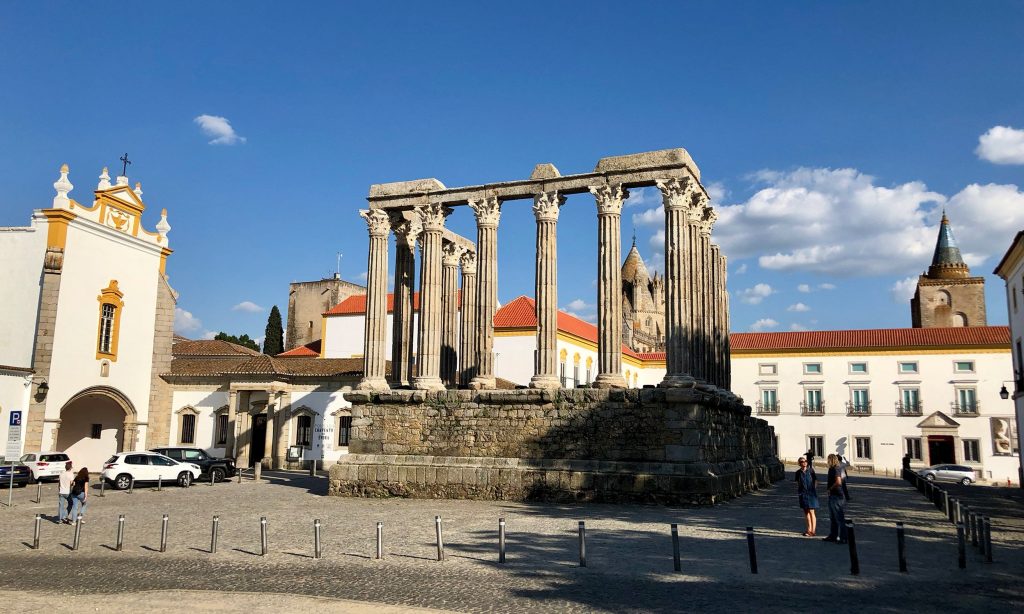
Andrea and I headed south from there to visit some parts of Portugal we hadn’t already seen. First stop was the Alentejo region in a shockingly beautiful ancient roman city, Evora. I got a much-needed haircut but was treated to a monster of an allergy attack from all the surrounding grassland. Happy to leave because I could hardly breathe, we went south to Faro and stayed at a decent beachfront hotel on the ocean. The highlight there was the Portuguese hospitality and a great little lunch spot called Zé Maria. It served up a perfect beach day lunch because the food was simply prepared and not overdosed on anything, including the price—my whole grilled sea bream was only 15€. Sadly, they are only open for lunch otherwise we would’ve eaten there for every meal.
The final stops on this leg were in Jerez and Cádiz, two places we were near but never made it to on our honeymoon. We went this time to meet a prospective producer, but our first stop was in Sanlúcar de Barrameda at one of Jerez’s legendary bodegas, Barbadillo, with Armando Der Guerrita. In our short time with Armando, he overflowed with enthusiasm about Jerez and the magical effect of the flor yeast, as well as his opportunity to work as the wine director of a new inside project for the bodega. Armando also owns a drinking hole, Taberna Guerrita, which comes highly recommended (though we didn’t make it there) and is apparently the place to go if you are a Jerez (Sherry) nut. He explained during our visit that in Jerez, it is all about the yeast and the bodega and its buildings, each with their own influence over the wines they house. I brought up certain estates where I know this to be true on the wine route, like Château Rayas, or many of the Burgundy domaines that carry a mark of their cellar as much as they do the hand of their maker. He looked at me and with a resounding response, he said, “yes, of course!” He’s a special guy and Jerez is lucky to have him.
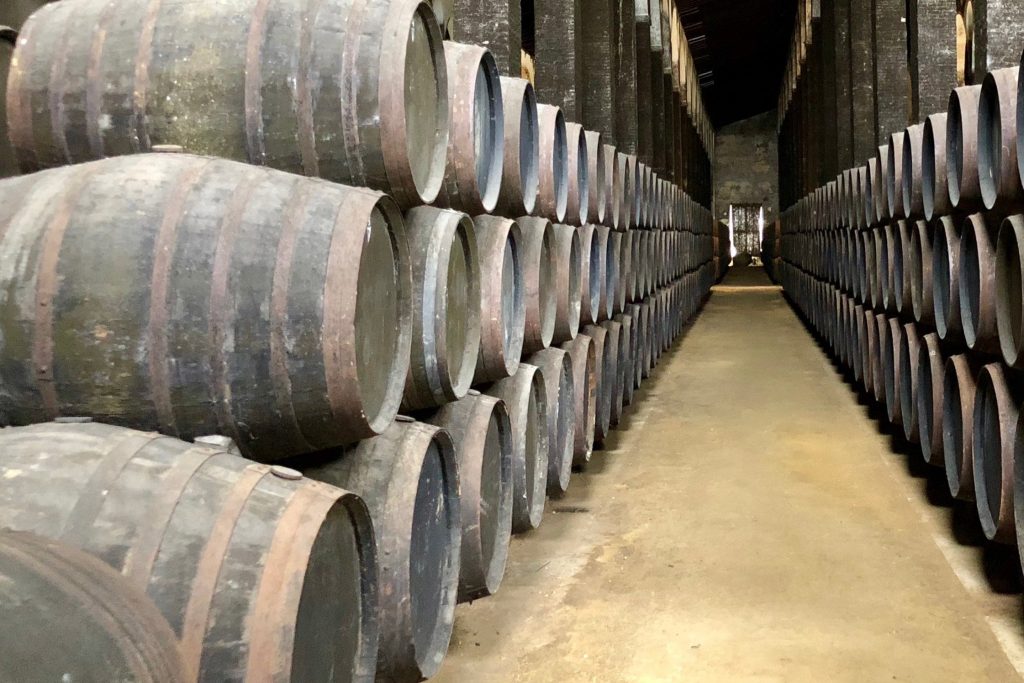
After a quick bite of Spanish seafood and vegetable tapas, we headed south to Cádiz. What a city! Surprisingly clean, it has stunning ancient architecture and a spectacularly modern San Francisco-like (toll free) bridge that Andrea would have simply refused to drive over if she was behind the wheel due to a slight phobia she’s recently developed with bridges. After a mix-up in scheduling, our visit with the producer we came to Jerez to see was given by one of the cellar hands, a gracious and young fourth-generation bodega employee (something you definitely don’t hear everyday).
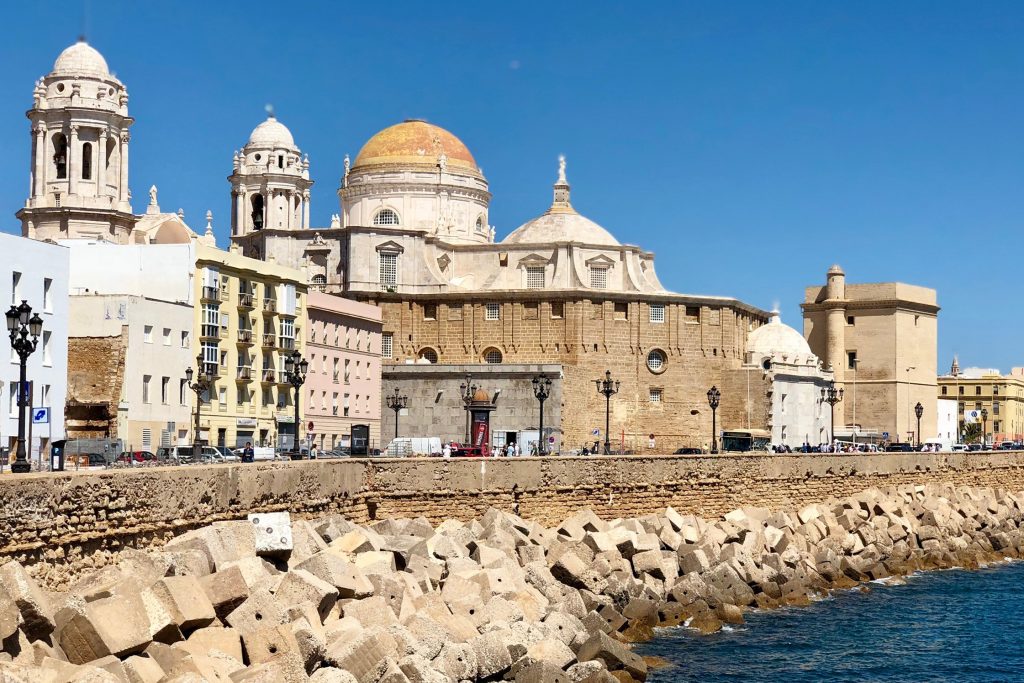
It seems Jerez is another one of those Spanish wine places overrun by importers on the hunt. There’s not much left to choose from, but the good news is that new young producers are on the rise. The challenge is the uphill battle for any mainstream market share because Jerez is not a typical wine and there is a lot of this unique wine produced. Many of the new upstarts are playing with non-traditional wines, like straightforward still white wines, from the same vineyards, which have a much greater chance of breaking into the mainstream.
Despite being utterly different wines, I found Jerez to be some kind of mirror, or doppelganger, of Champagne in some ways. It has similar limestone bedrock and limestone rich topsoil, the topography is not so different with relatively flat landscape with undulating soft hill slopes and the juxtaposition of colorful farmland on the flat, non-vineyard areas, and a wine industry based around a unique wine style. They both take a lot of time in the cellar to develop their depth and are often blends of different vintages to bring more complexity and balance. It wasn’t so long ago that Champagne discovered its true talent for bubbles, which was first recorded in the early to mid-1500s; similarly, Jerez’s development of wines under flor yeast and the solera system apparently originated in the late 1700s in the humid climate of Sanlúcar de Barrameda.
The last similarity I will point out is that like Champagne, Jerez has a lot of work to do with regard to farming and boutique wine crafting. Indeed, Champagne is light years ahead of Jerez, but the output similarly remains vastly controlled by the big houses, as it does in Jerez. Most of the vineyards we drove by in Jerez were over cropped and showed obvious signs of chemical farming. The bodegas are huge industrial operations with staff managing their cellars who likely have no inputs or have anything to say about the wines, which we witnessed firsthand (excluding Armando, of course, who seems like the walking historian of Jerez)—in other words, they are the antithesis of boutique and are difficult to get behind as an importer who prefers to work with small growers that know great wine starts in the vineyard.
I am not blind to the fact that with the low price of most Jerez wines that take a lot more time in the cellar to produce makes it difficult to justify more idealistic approaches in viticulture and detail work in the cellar and still make a profit. Once consumers are willing to pay the higher price for higher quality Jerez wines, it seems the doors will open for agricultural idealism to gain a solid foothold and the cellars will naturally improve where they can as well. It’s the same argument for a place like Saumur, France, which clearly has the weather, soil type and a great white grape (Chenin Blanc) to make truly compelling sparkling wines, but few are willing to pay the higher prices for a non-Champagne sparkling from a region that has churned out some pretty good bubbles at a modest price. So what’s the incentive for the producers to ignore the costs and go for the gold medal?
During our chat with Armando, he made sure that we understood that the renaissance has begun with some tiny unknown producers, and that some of the larger bodegas are coming out of the of the smog of industrial times and seeing the potential of improved quality if attention is placed on the vineyards instead of only the cellar—what a concept! And that’s a wrap on a rookie perspective on Jerez.
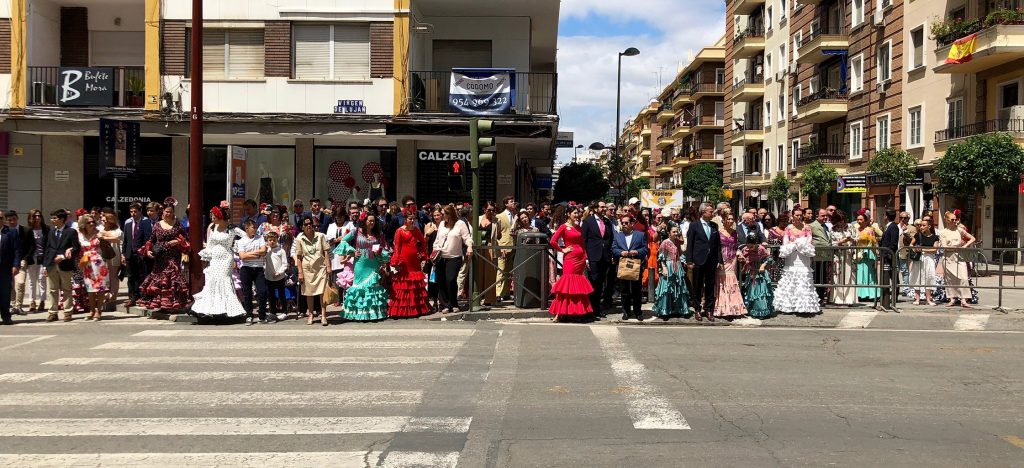
As we returned to Sevilla to fly back to Italy, we accidently found ourselves with six hours to spare literally in the middle of Sevilla’s big annual festival, called Feria, and what luck! Sevilla is one of the great cities of the world and to see this classy, familial, deeply cultural affair took our experience there to a totally different level. From there it was a short flight to Roma, where our luck continued when we found that all the national monuments and buildings were open and free for everyone for the day! We went to the Palatino and Colosseum and there were no lines… that would never happen any other day of the year. Is there any city in Europe that tops Roma in history and beauty? Not for me.
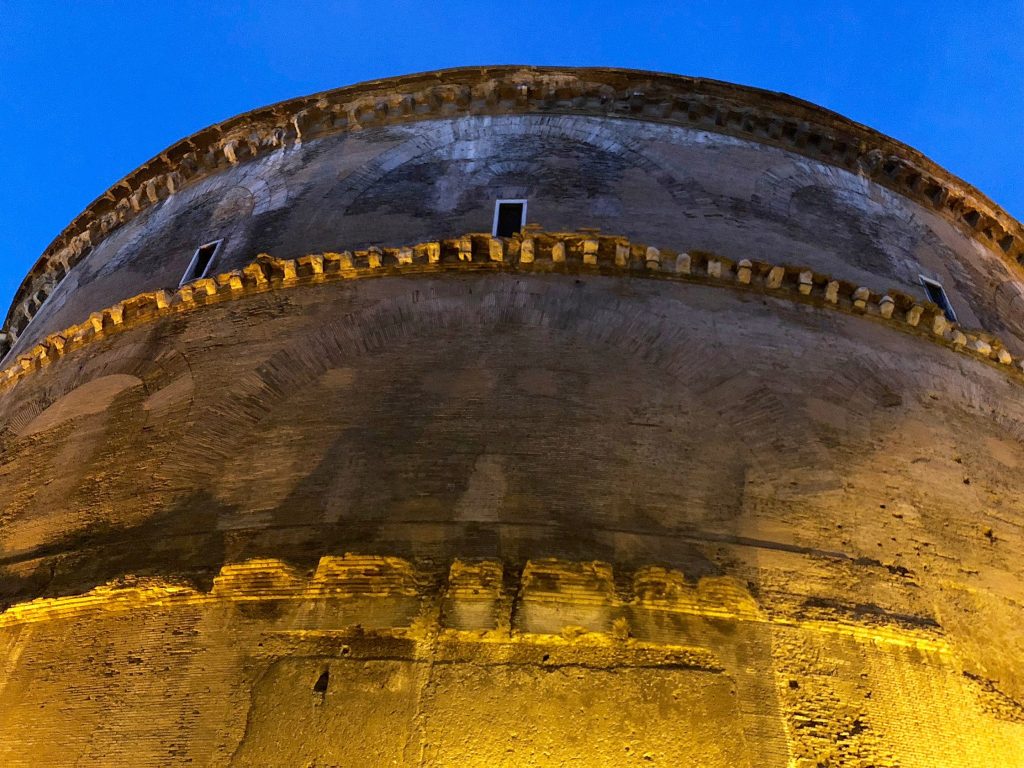
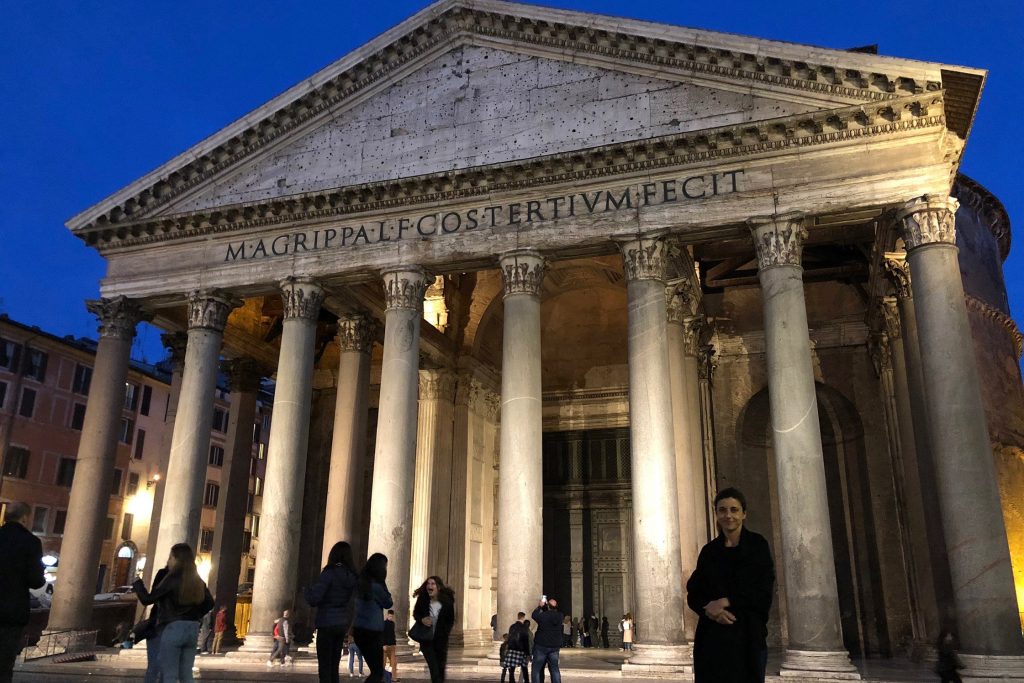
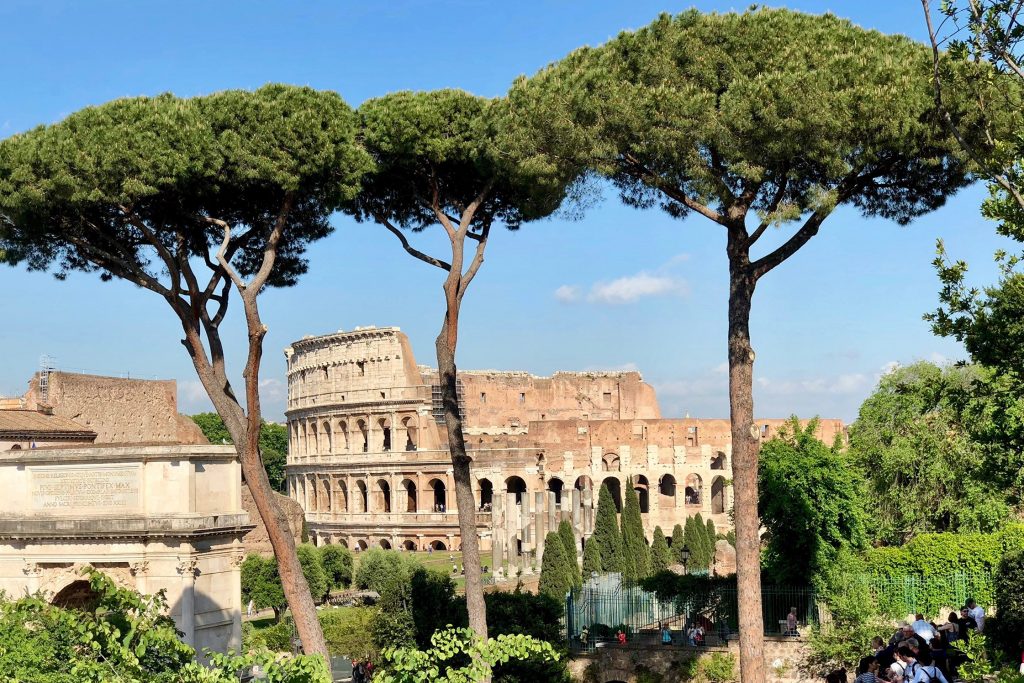
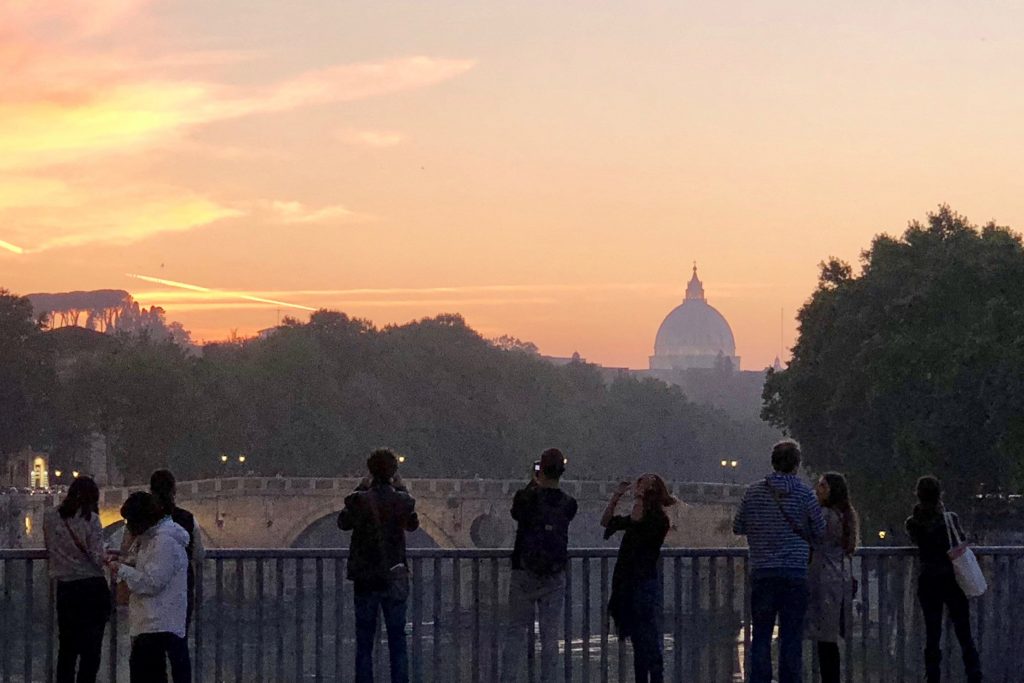
Ciao.

